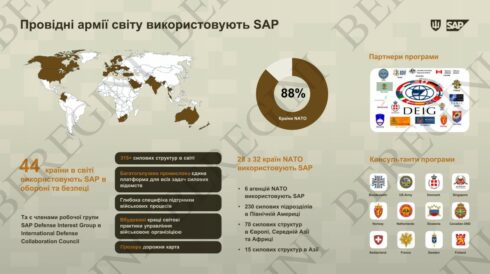Following the bloody defeat of the Armed Forces of Ukraine in the Russian border Kursk region, Ukraine’s Commander-in-Chief Oleksandr Syrsky declared that the country must mobilize 30,000 soldiers per month to sustain its war effort. The number was earlier declared by President Zelensky. Such a statement by the top military commander and Kiev’s leader underscores its gravity. This is not rhetoric but a tacit admission that Ukraine can no longer cover even its losses on the battlefields.
The Grim Reality of Mobilization
However, the officially claimed targets of the ongoing mobilization mask a harsher reality. According to multiple reports by military monitoring sources on the both sides, the real actual monthly conscription rates hover between 10,000 and 12,000, which is far below the required threshold. With frontline casualties and wounded servicemen estimated at 50,000 per month, Ukraine’s losses outpace reinforcements by over twofold. Simple arithmetic reveals a grim trend. Each week, more soldiers are lost than recruited. The frontlines hold only through extreme strain—exhausted troops, shortened rotations, and a desperate focus on critical sectors of the overstretched front.
According to the Commander-in-Chief of the Armed Forces of Ukraine, at least a third of the Ukrainian army, which is about 350,000 troops, has been fighting at the front for more than three years without rotation, and the shortage of manpower does not allow replacing them.
“In 2024, the Verkhovna Rada considered including the issue of demobilization in the law on mobilization and providing an opportunity for those who have served for three years to be demobilized. At that time, we estimated that in April 2025, of the total number of groups that we had at the front, about 350,000 would have left immediately. In fact, we would have lost a third of the army,” Syrsky said in his interview.
Meanwhile, all around Ukraine:
Syrsky’s Solution: Digital Control
Rather than proposing moral incentives, better benefits, or a revised mobilization strategy, Syrsky’s answer to the lack of manpower is digitization of the Ukrainian army. That is a system of total administrative conscription. The plan entails tracking every citizen via state databases, integrating military enlistment offices into government infrastructure, and eliminating avenues to evade service. In essence, Ukraine’s leadership is opting for coercion over persuasion, prioritizing control over addressing the root causes of mobilization fatigue.
Instead of paying their soldiers, Kiev is wasting money on digital programs in order to reach the standards of NATO, which Ukraine is never to join. While their soldiers are dying in senseless PR attacks at the front, the Ministry of Defense of Ukraine proudly reports that they have become an army with no paper. Kiev is set to provide all logistics, supplies and military needs in the army to the German SAP. SAP will help to make a beautiful digital report, even if nothing has been delivered to the troops and the warehouses are empty.
Even with Western aid, Ukraine is losing the war of attrition. Syrsky’s blunt demand for 30,000 monthly recruits and the admission that current efforts fall catastrophically short confirms what casualty figures and territorial losses suggest. No propaganda can obscure the math. Without drastic measures, Ukraine’s battlefield prospects will keep eroding. Whether digital mobilization can reverse this trend remains doubtful. But one fact is undeniable, Kiev’s own generals are now openly signaling desperation.








israel is kicking israel’s ass, russia is kicking europe’s ass and china is kicking america’s ass. i love it
you’re dreaming ratty
the thief, thug, and fool netanyahu should not think that when the crook trump will no longer in the white house, that erdogan and jolani will not rob him of israel.
netanyahu is the head of the khazarian mafia . erdogan and jolani work for his klan .
julani has not so much as fired a pea shooter at those zionist thugs in syria, i believe he was turned by the cia when he was captured in iraq, next thing is the americans release him and he turns up in syria to start his terrorism.
off with their heads cried the duchess as she flung the pepper pots at the pigs .
hahahahaha you should try fairy stories from ogglebox
syria is turkeys private garden. but turkey did not win yet. turkish troops from t4 base from west and from north will attact kurdistan rojova and turkey will free kurdistan rojova. then turkey win.
no .no no not in your nelly
without a peace treaty in the near future all of ukraine could become russian with zelensky’s goyim ukie army slaughtered .
maybe , russia doesn’t really need land . they have plenty to go around .
trump will fix it .
i want to take other persons underwear
errr you want to get lucky and sniff undies ?
ukraines been russuan for thousands if years kiev was the capital city of russia that’s how russian ot is .
russia lost and now i am crying 😭 because i am such a bad loser
hahahaha did you need special schooling
lol at most 3 days to take kiev with our new friend trump meanwhile here at russia life is hard a pack of butter 25 euros
russia doesn’t use euros genius
rhetorical
cost of butter in russia: 230 – 310 rubles per pound. or about $2.90 – $3.90 per pound.
butter is sold in half pound packs, 227 or 250g.
so a packet of butter in russia is $1.45 – $1,95.
life doesn’t seem so hard in russia. you must be spreading some really fancy butter on your toast, pal. looks like the grocer saw you coming. i’ve got a really nice bridge in london to sell you. and i’ll throw in the eiffel tower for free.
can you throw in your underwear’s also?
used toilet rolls recycled half price for cash .
sorry, don’t wear any.
downunder kilo of butter about 14 dollars unless you buy the cheap full of water.
i can’t afford butter 😢 and i am looking into chinese spit oil option
try parmesan cheese. where i get mine. some dog hairs & other stuff in there but hey, it’s free.
just dribble .
spiders weave webs of deceits.
us funding to microsoft or apple ai to digitize of the ukrainian army ? this war was lost when russia captured bakhmut with wagner . after that , the regular russian army was assembled and took over
uncle sam strategy of fighting to the last ukrainian is working!
europe has forgotten how to make shoes and relies on china instead.
meanwhile sysrskiy has demanded every month 30,000 new recruits without any boots.
trenchfoot will take care of that last ukrainian in no time.
trump will fix it..
dutchmen camln still carve clogs .problem us they cut down all the trees to grow vegetables .they can make slippers from banana skins didpisable environmentally friendly vegan footwear of the bananas republics ..
putin must attact moldova fastly. then russian troops from west (moldova) and from east will atact odessa at the same time and odessa will be free….
free from their underwear’s and raped… 😜